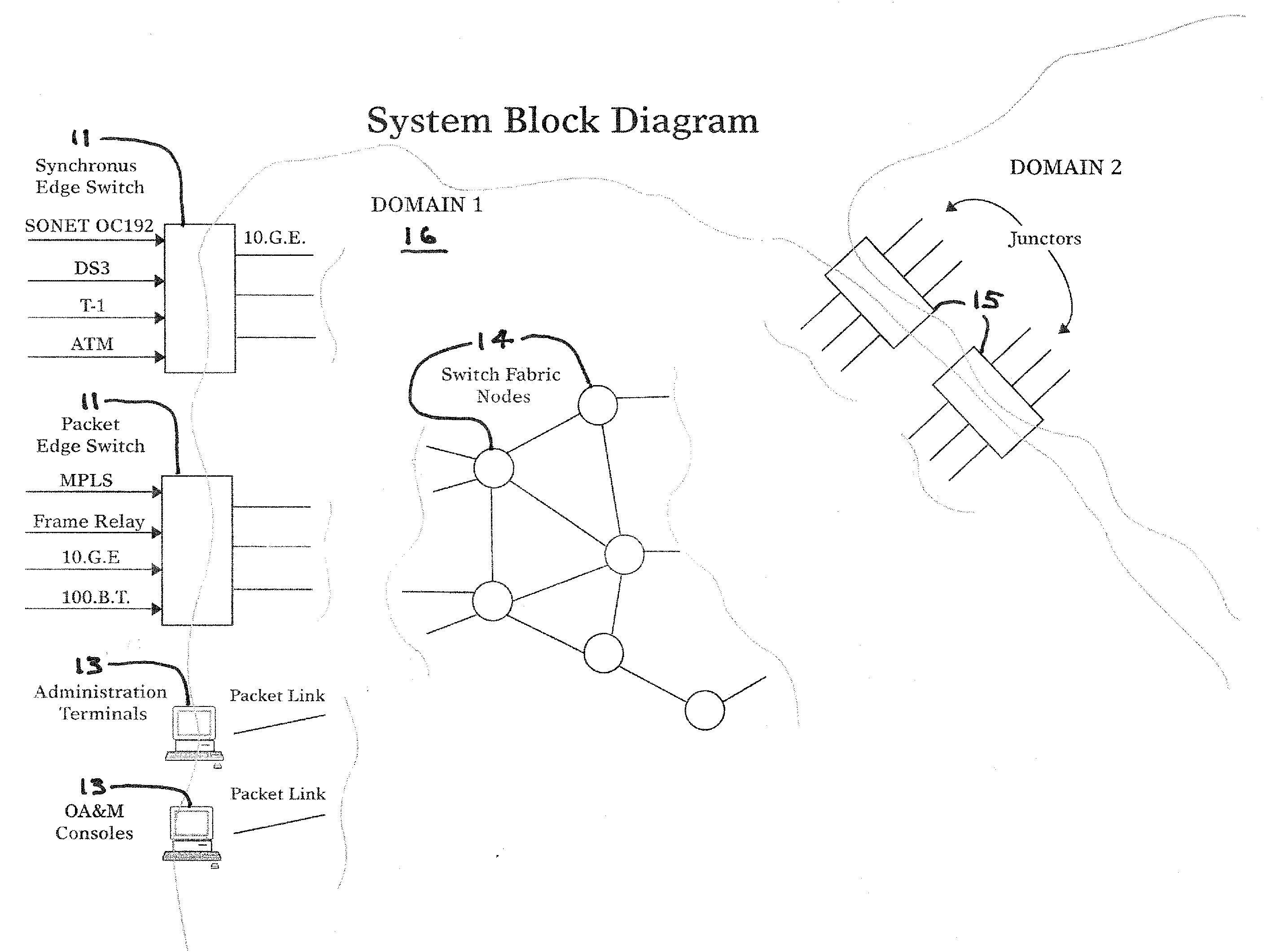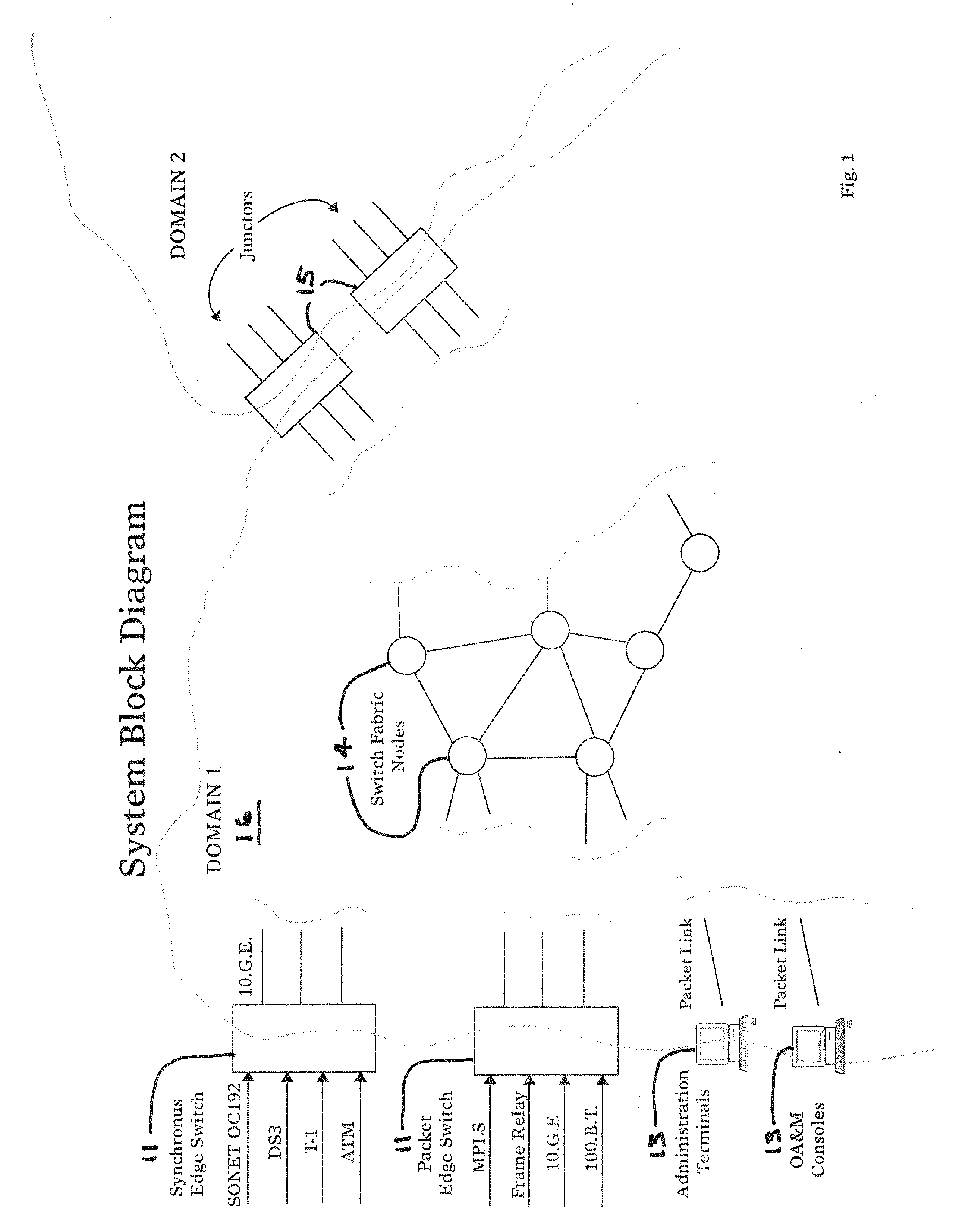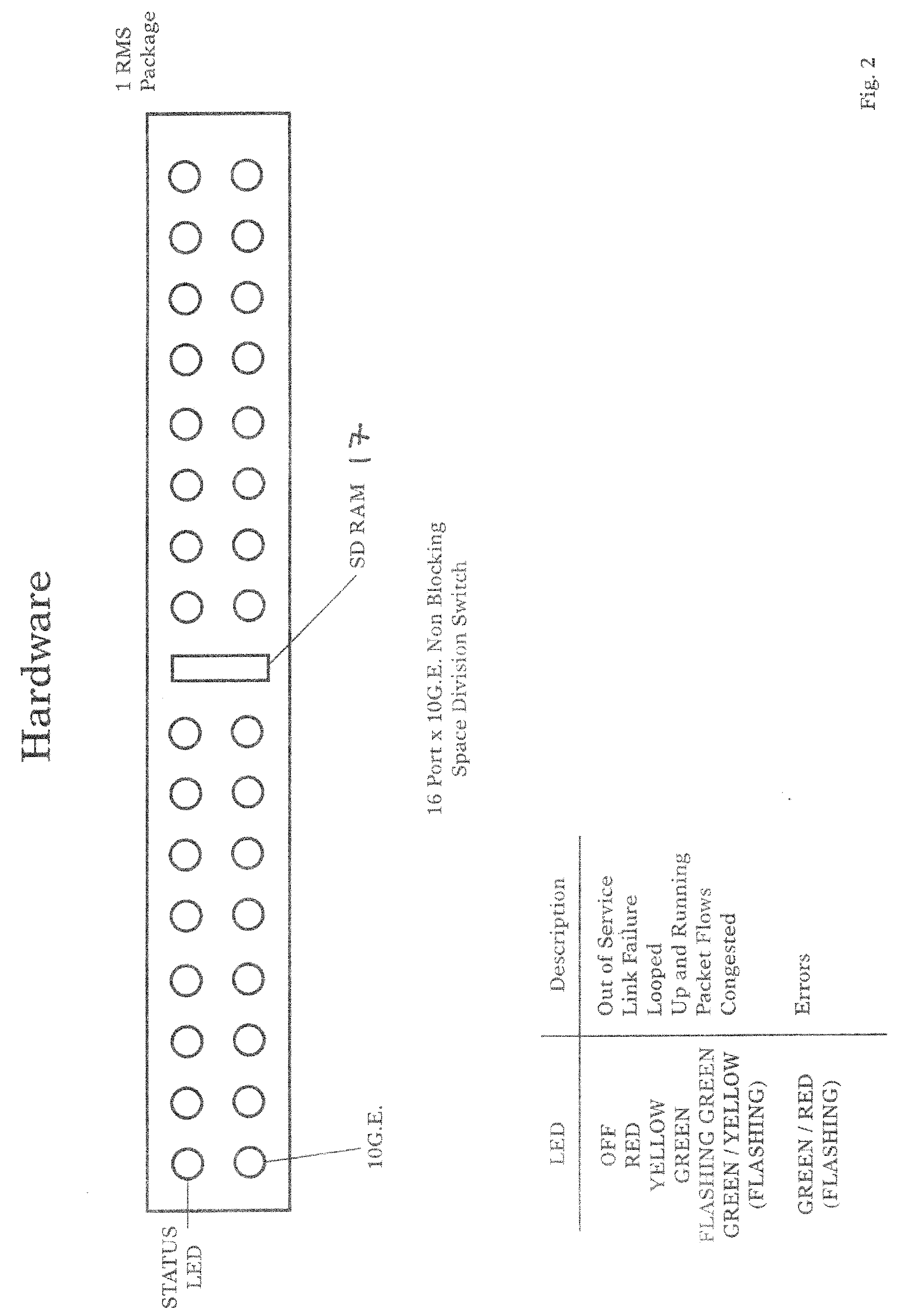Self-Routed Layer 4 Packet Network System and Method
a packet network and self-routed technology, applied in the field of data networks, can solve the problems of inability to take into account dynamic parameters, inaccurate or erroneous decisions, and slow routing process, and achieve the effects of simple and inexpensive implementation, increased performance of such a network, and high speed
- Summary
- Abstract
- Description
- Claims
- Application Information
AI Technical Summary
Benefits of technology
Problems solved by technology
Method used
Image
Examples
Embodiment Construction
Physical Architecture
[0087]This section describes the physical architecture of a model system design of an MPLS type network using the SRP Networking methods.
[0088]A domain is a collection of nodes that are managed by the same entity or are in a specific geographic area. FIG. 1 shows a typical SRP Network Domain. A domain 16 consists of Edge Nodes 11, Junctors 15, Switch Fabric Nodes 14, OA&M consoles 13 and Links that interconnect the nodes.
[0089]Edge nodes 11 provide entrance and exit ports for a SRP Networks Domain. Edge Nodes 11 translate between the layer 4 SRP Networks Architecture and other networking architectures such as MPLS, ATM, Frame Relay, SONET, TCP-IP, TDM, etc. Edge Nodes 11 use Hunting Packets to build Label Switch Paths (LSPs) to other Edge Nodes subject to QOS requirements such as latency and guaranteed bandwidth, and subject to policy constraints such as access restrictions, use of specific service providers, link cost or types of links. An Edge node can be a sp...
PUM
 Login to View More
Login to View More Abstract
Description
Claims
Application Information
 Login to View More
Login to View More - R&D
- Intellectual Property
- Life Sciences
- Materials
- Tech Scout
- Unparalleled Data Quality
- Higher Quality Content
- 60% Fewer Hallucinations
Browse by: Latest US Patents, China's latest patents, Technical Efficacy Thesaurus, Application Domain, Technology Topic, Popular Technical Reports.
© 2025 PatSnap. All rights reserved.Legal|Privacy policy|Modern Slavery Act Transparency Statement|Sitemap|About US| Contact US: help@patsnap.com



